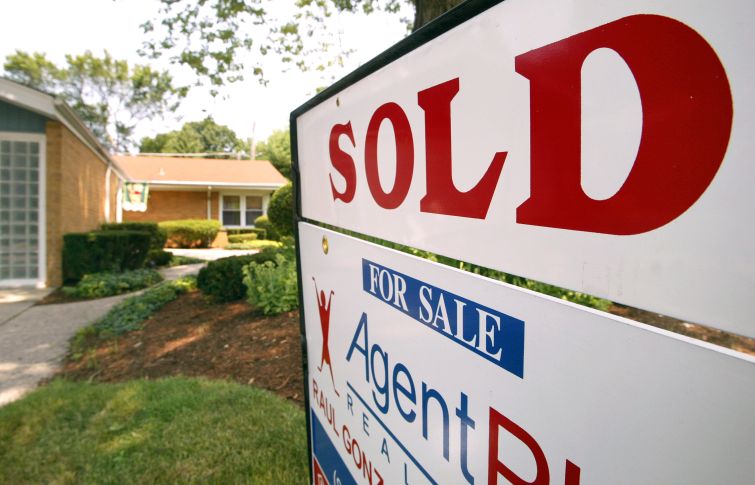Will Proptech Pop the Housing Bubble or Make It Worse?
Far from helping prospective buyers, some startups might be making an already difficult housing market tougher
By Philip Russo April 19, 2022 11:00 am
reprints
As the U.S. housing shortage worsens, some proptech startups are attempting to balance the buyer-seller equation through their respective approach to the market. However, it is questionable whether their efforts will bring relief to single and multifamily homebuyers.
Normally, spring is the start of the home seller’s season. However, the number of homes for sale in the U.S. fell nearly 19 percent annually in March compared with a year ago. While that’s less of a drop than the 25 percent decrease recorded in February, it may be a sign the housing market isn’t getting back to normal as quickly as economists had projected, according to Realtor.com.
Nationally, the median list price was $405,000 in March, a 13.5 percent year-over-year increase and a 26.5 percent jump from two years ago, according to the site.
Faced with the housing supply crunch and rapidly rising prices, some proptech startups are resorting to everything from cash-only offers to sellers, lower-than-usual or no-fee deals, and even auctions to match supply with demand.
The market factors exacerbating the supply shock are daunting.
“The elephant in the room is that a lot of the shortage is actually driven by institutional buyers,” said Sarah Liu, a partner at Fifth Wall who co-leads the firm’s seed through Series B proptech venture fund investing. “You actually have a bit of a pullback already happening on the consumer side as mortgage rates start to really increase. There’s been billions of dollars committed over the last 12 to 18 months from institutional buyers to purchase single-family homes, generally around the same entry price range that a lot of buyers are currently trying to purchase for themselves.”
The result of the institutional buyers’ weight on the market is that cash deals are becoming the dominant transaction rule, as the competition for homes makes any other financing method too weak to close, according to professionals in the field.
The institutional squeeze-out of individual buyers is so strong, some proptech firms are looking to profit from the big companies’ voracious desire for product by using new technology, as well as decidedly traditional methods, Liu said.
“We’ve seen a number of platforms emerge that are actually trying to cater specifically to those institutional buyers more than anything and they’re using channels like [text messaging], or even just old-fashioned flyers, radio ads, etc., to bring out sellers who aren’t actively trying to sell, but would maybe consider selling for the right price or [just] to get out of their home,” she said.
Proptech companies like Rubik, which facilitates all-cash offers to sellers, and Sundae, a Fifth Wall portfolio startup that also focuses on cash purchases, but for “as is” homes and “mom-and-pop fix and flippers,” as well as institutional buyers, aim at providing a better supply pipeline, Liu said. Both are no-fee platforms that are betting on the continued spike in housing prices to provide the profit margin for their business models.
One proptech startup with a unique approach to the residential marketplace is Spokane, Wash.-based Doorsey, which offers real estate agents a platform and the support to run an auction-style process on their own listing, said Jordan Allen, CEO of the company. “Buyers know exactly what it takes to win. Sellers get the highest price and real estate agents on both sides can earn more in less time and actually advise clients because they can see what’s going on.”
Real estate auctions have been around forever, but Allen’s startup, which was founded in November 2021 and has “almost $500 million” worth of property on the platform nationally, not only makes the process faster and more transparent, but fairer, he said. Doorsey contracts with listing agents and sellers to determine an agreement that works for all parties. There is no cost to use Doorsey as a buyer unless otherwise noted in the seller’s terms, according to the company website.
“What makes auctions amazing is that the rules are set upfront,” Allen said. “Clear timelines, clear terms and the highest bidder wins. Sellers might have some biases of who they want to live in their home when they leave. Like, ‘I want a family. I don’t want just a couple, or I don’t want this race, ethnicity, sexual orientation or anything else living in my home.’
“It’s 2022 and it’s obscene that this kind of bias still happens, but it does. Consumers should be able to decide which home they want to move to, not sellers. [With Doorsey], whoever pays the most for the home gets the home regardless of any of those factors.”
While the real estate arms of fine art auction houses Christie’s and Sotheby’s focus on the high end of the residential sales market, and companies like Auction.com were built in 2009 to liquidate vacant properties after the Great Recession, Doorsey focuses “on the 30th to 65th percentile of homes in the market,” Allen said. “What we found is homes that are in that 30 to 40 percentile tend to be more like investor properties. But we also get first-time homebuyers, as well.”
Another approach to improving the residential market is found in proptech startup Aalto, a San Francisco-based, peer-to-peer platform designed to directly connect individual sellers and buyers off multiple listing service systems, said Nick Narodny, Aalto’s founder and CEO.
“We are the only place where consumers can sell homes direct to one another [without] middlemen,” Narodny said. “This unlocks a significant amount of inventory across the San Francisco Bay Area. Every single week we are expanding inventory by at least 20 percent, in some cities by 100 percent.”
Launched in May 2021, the housing shortage has caused demand for Aalto’s service go “through the roof,” Narodny said. “We’ve had more inventory in the past three weeks than we’ve ever had. Two months ago we were launching a home a day and we’re now launching a home an hour.”
Along with its speed-to-market component, Aalto is also priced right for DIY sellers and buyers, charging a 1 percent fee.
Unlike some other proptech services in the marketplace, Aalto has seen virtually no institutional investors attempting to buy its listed homes, he said. “We haven’t created a strategy for institutions,” he said. “At some point we probably should, but just for business reasons, but [today] it’s families.”
Proptech startups are even addressing the secondary home marketplace, said Chad Gallagher, chief investments and growth officer for Home365, a Lancaster, Penn.-based company founded in 2015 that bills itself as a hybrid insurtech and property management company.
“We’re definitely seeing an incredible amount of deals now coming through with not just no contingencies tied to them, but very fast closing times,” Gallagher said. “That’s actually in some ways where the investor is able to sometimes come to the top of the heap over a residential buyer who wants to live in the house. We’re more and more telling our investors to be prepared to actually buy the house in cash.”
A “mobile-first” proptech company that has 7,500 listed units across 14 cities, Home365 is seeing “30 to 40 offers” arrive over a four- to five-day period, often closing the deals in two to three weeks, rather than the usual six-week closing timeline, Gallagher said.
Home365 is a subscription service in which property owners pay one flat monthly rate, including rental listing, rent guarantee, tenant management and maintenance, according to the company website. The rate is calculated by considering parameters such as geography, climate, age of the property, last renovation date, size, history and type.
For the foreseeable future, the market will continue to be unkind to individual buyers, said Fifth Wall’s Liu.
“If you’re a retail buyer who’s trying to purchase their first home, unfortunately [some proptech] companies aren’t really in their corner,” Liu said. “Similarly, the builders are increasingly skewing toward build-for-rent. That’s a big trend we’re seeing and it’s going to have a ripple effect as far as homeownership not just next year, but also probably five to 10 years down the line as far as what share of the housing stock is dedicated to single-family homes for ownership and what shares [are] created for rentals.”
However, the market should eventually balance out, she said. Mortgage rates recently crested 5 percent for the first time in more than a decade. Institutional investors in particular could grow skittish.
“We’re hearing that folks are underwriting to 2023 or 2024 value at this point. So there’s a chance that folks on the institutional side could also be overpaying, that rents don’t actually increase or sustain in the way that they’re expected to,” Liu said. “And if those folks end up having to offload a lot of their homes, then the balance can also switch the other way as well. Lots to consider, which is why there’s so much uncertainty.”
In the end, this could have profound implications for the U.S. housing market at large.
“I do not consider myself enough of a prophet to be able to say exactly what the long-term implications are,” Liu said, “but yes, right now, I think the trend is toward potentially lower homeownership [rates] moving forward.”
Philip Russo can be reached at prusso@commercialobserver.com.


